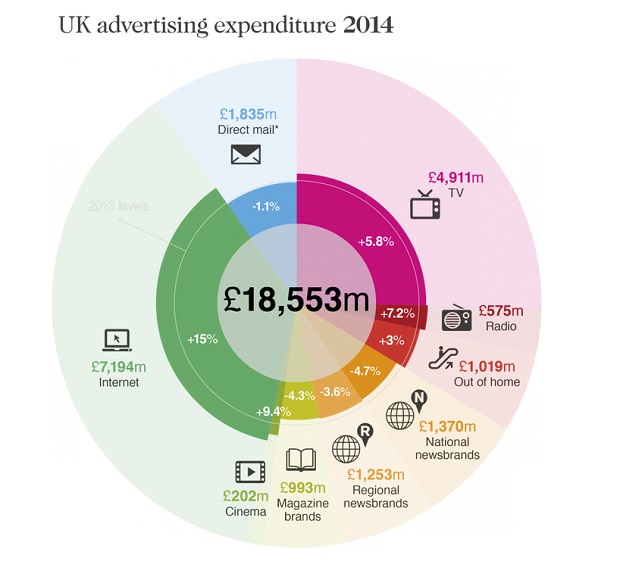UK advertising spend hit a record £4.7bn in first quarter of 2015, but newspapers and publishers reported the slowest growth in digital ads on record and a decline in spending of 6.8% across industry, according to new research.
However, internet advertising as a whole increased 12.8% during the quarter to reach £1.9bn, still growing faster than TV ads.
The latest figures from Warc and the Advertising Association saw record growth for the tradtionally weak first quarter, of the year, driven by a surge in TV advertising.
TV advertising grew 11.5% year on year to reach £1.2bn, it’s highest Q1 figure on record, the study found.
Warc said the TV ad sector was benefiting from new revenues streams such as sponsorship, video-on-demand services, advertiser-funded programming and product placement.
Radio advertising and outdoor advertising also performed well, leading to an overall 11.2% rise in display advertising.
However, newspapers and other news publishers saw digital ad growth at national news brands seeing the slowest growth on record, of 7.8%, leading to an overall decline of 6.8% in spending across the industry.
That came despite internet advertising as a whole increasing 12.8% during the quarter to reach £1.9bn, its highest ever quarterly total. The growth is increasingly driven by advertising on mobile devices, which was up more than 50% to pass £500m.
Warc research analyst James McDonald, who worked on the report, said: “We continue to record growth in digital ad revenue among both national and regional newsbrands as part of our quarterly survey of publishers, although a mild slowdown has been noted for both in recent quarters.”
“There are some concerns surrounding the effectiveness of banner ads generally, coupled with the increasing adoption of ad blockers among consumers. Looking at the wider landscape, we’ve noted that video is growing to take an increasing share of the online display market, which is currently at odds with the way most newsbrands package their content.”
